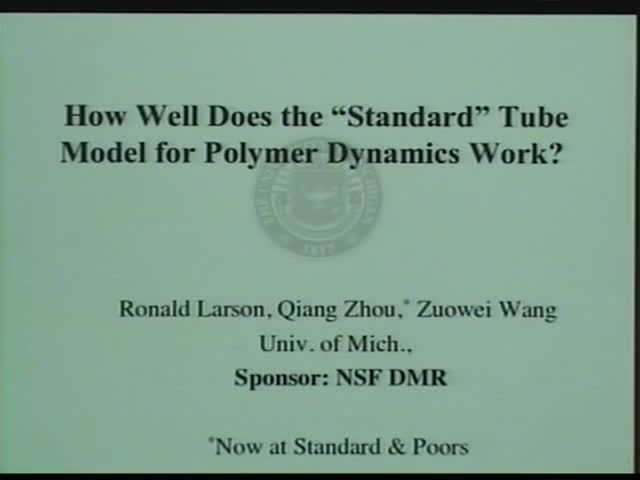How well does the “standard” tube model for polymer dynamics work?
Presenter
September 14, 2009
Keywords:
- Polymers
MSC:
- 82D60
Abstract
Using concepts developed over the years by de Gennes, Doi, Edwards, Marrucci, Rubinstein, McLeish, Milner, and others, a kind of "standard model" for entangled polymer relaxation and rheology has been developed, which, like the "standard model" of high-energy physics, has a number of ad hoc assumptions and fitting parameters. The “standard model” of polymer relaxation is based on a phenomenological "tube" surrounding each polymer chain that represents the effect on that chain of non-crossability constraints imposed by surrounding chains. As a result of its confinement to the tube, the chain relaxes by reptation – or sliding along the tube, accordion-like fluctuations of the chain within the tube, and movement of, or dilation of, the tube due to motion of the surrounding chains creating the tube-like region. These ingredients have been generalized into algorithms for the prediction of linear rheology of arbitrary mixtures of linear and long-chain-branched polymers; these algorithms have a number of phenomenological parameters and ad hoc assumptions. An increasing body of experimental data on “well characterized linear and branched polymers” allows these theories to be tested in increasing detail. Here we describe the successes and failures of the “standard” model and discuss new molecular dynamics simulations and more refined experiments that might help the field transcend the limitations of the “standard model.
